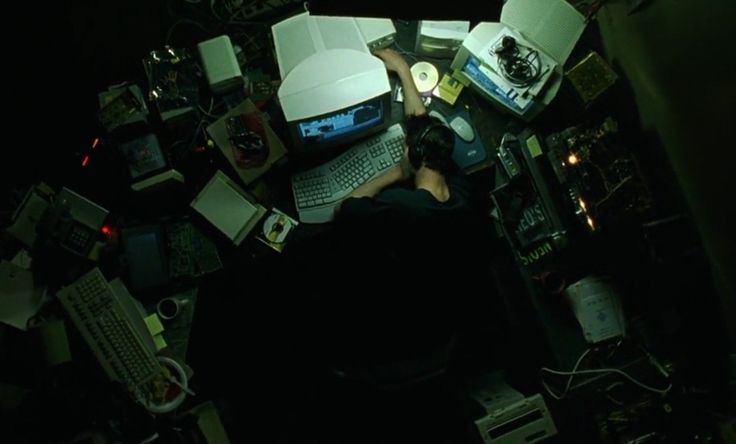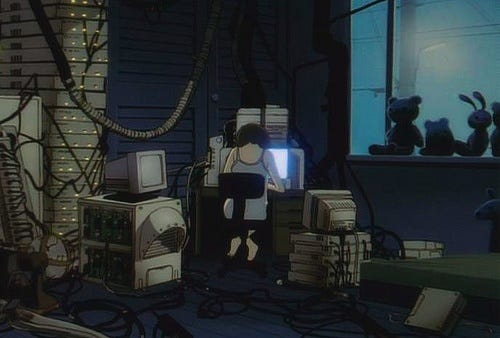There’s a unique challenge in facing a blank code editor armed only with basic programming knowledge and the conviction that it’s possible to figure things out. As an artist, I’m used to improvisation—but coding? That’s a different game entirely. I had some experience with p5.js and tinkering with Tumblr HTML in my younger days, but deploying a full React-based website? That was new territory. Still, the urge to build my own portfolio using Next.js pushed me forward, armed with determination, basic CSS and HTML skills, and help from two AI copilots.
The Spark: Delusional Confidence Meets Reality
Let’s start with a confession: I have a fascination with technology I don’t fully understand. From experimenting with early AI image generation on my own computer to using Touch Designer for interactive art, the idea of building my portfolio felt like the ultimate creative challenge. Honestly, I was fed up with generic platforms that never quite captured my energy or vision. Paid subscriptions and limited customization always felt like barriers to making something truly unique. I wanted a portfolio that reflected me, without compromise.
That’s when I discovered Next.js. It seemed sleek, modern, and—critically—free. My first exposure to this framework was during my work as a Lead Designer at a crypto startup. I collaborated closely with engineers to ensure my UI/UX designs in Figma translated perfectly into code. Watching them work gave me the impression that it wasn’t too hard—how difficult could it really be?
A quick Google search labeled it “beginner-friendly,” which, as I later learned, is tech lingo for “you’ll struggle, but it’s doable.” As it turns out, persistence makes all the difference.
The Learning Curve: My Synthetic Team
Let’s be clear: this wasn’t a solo effort. My first ally was Vercel’s V0 template—a lifesaver for anyone venturing into JavaScript with limited experience. Think of it as the IKEA of coding: seemingly straightforward until assembly begins. This is where my second teammate, ChatGPT, stepped in. V0 provided the framework, while ChatGPT became my mentor.
Using V0, I started adapting the design based on my Figma layouts. It helped me see how code could translate into different functionalities and screen resolutions. ChatGPT, meanwhile, demystified coding concepts like “props” and “state management,” offering explanations that felt almost human. It also helped me troubleshoot CSS quirks that turned my layouts into unintentional abstract art. Debugging became less intimidating, as the AI guided me through Git, component compatibility, and other hurdles.
Pro tip: ask ChatGPT the right questions, and it becomes your patient tutor, turning tech jargon into digestible insights. It even made my foundational knowledge from CS20 classes practical—though I learned that the best way to understand coding is simply by doing it.
Deployment Adventures: Almost Free, But Not Effortless
Once the site reached a semi-functional state (i.e., it didn’t crash on launch), deployment became the next hurdle. Vercel simplified this process significantly, letting me link my custom domain for free—a rarity among website builders. As someone who appreciates a good bargain, I was thrilled.
However, deployment wasn’t entirely smooth sailing. As a non-software engineer, Git wasn’t second nature to me. Thankfully, my synthetic team—V0 and ChatGPT—guided me through the process. I now have a full GitHub project where I can deploy updates seamlessly. The sense of empowerment was unparalleled.

To top it off, I discovered Cloudflare’s free email domain service. This gave me a professional email address to match my polished portfolio. Who knew professional-grade tools could be so accessible?
Lessons Learned (or, What Not to Do)
Keep it simple: I fell into the “just one more feature” trap multiple times. Simplicity ensured faster deployment and a more functional design. Focus on essentials and iterate over time.
Google everything: No issue is unique. If you’re stuck, chances are someone else has been there before. Search your problems.
Perfection isn’t necessary: My portfolio isn’t flawless, but it’s authentic. Each imperfection reflects my learning journey, and I wouldn’t trade that for a generic template.
Leverage AI for efficiency: Without AI, this project would have taken weeks. It streamlined every stage, making the process approachable and fast.
Wrapping It Up
Building this portfolio felt like piecing together a puzzle with missing parts—frustrating but deeply rewarding. If you’re an artist (or anyone, really) considering a similar project, my advice is simple: jump in. Make mistakes. Learn as you go. The result is a space that’s entirely your own and worth every effort.
And if nothing else, you’ll walk away with a great story—though it might only appeal to fellow nerds.
ps. Check it out how it turned out here: https://cechk.art/
(it’s still buggy, sometimes slow, and it doesn’t have all my art, but hey, i’m working on it! <3 )



